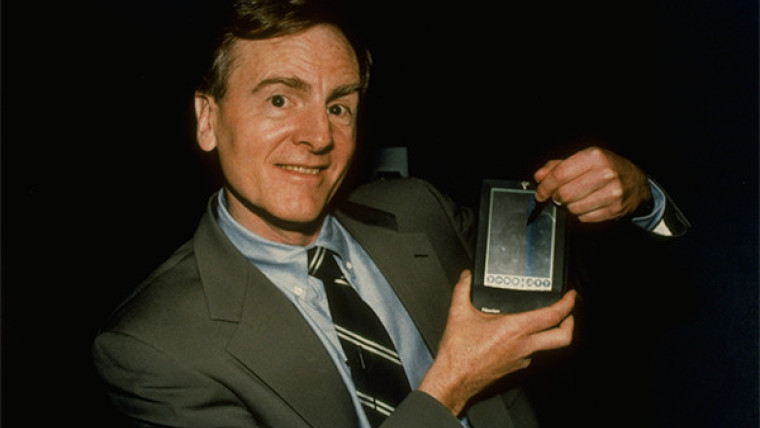
On June 5, Apple will hold the introductory keynote for its annual WWDC developers conference at its headquarters in Cupertino, California. It is highly expected to officially reveal one of the tech industry's worst kept secrets: a mixed reality headset. It's going to be an all new product line and platform for Apple, and it's already generating a lot of talk about if it will be successful.
31 years ago today, on May 29, 1992, Apple also revealed an all-new product, outside its normal Mac PC lineup. It was called the Newton, and for a while, it was thought that this product would bring in a new age of portable computing.
The Seattle Times reported on the reveal of the Newton, which was made by its then-CEO John Scully at the Consumer Electronics Show in Chicago (back when the trade show was not held in Las Vegas). Scully is credited with coining the term "personal digital assistant", better known by its acronym PDA, to describe the type of device that the Apple Newton was supposed to be.
Here's how the Seattle Times described it at that time:
The black, videocassette-sized prototype Apple has been showing - which the company says "might" be its first PDA - has a 3-by-5-inch screen that looks like a clear notepad with lines. The device weighs about a pound.
PDAs are supposed to help users like a good assistant who, with little direction, automatically files, makes phone calls, sends and retrieves faxes, types letters and reminds the boss about appointments.

The Newton was a major focus for Scully, who had been Apple's CEO since 1982 and who basically was in charge of everything at the company since co-founder Steve Jobs resigned in 1985. However, that initial reveal of the Newton at CES 31 years ago didn't go according to plan. According to Time, the first prototype for the Newton that was put on stage didn't work because it had dead batteries inside.
Another big problem was that even though Scully pushed for the Newton to be revealed in 1992, it wasn't close to being ready for an actual launch to consumers. In fact, it would be over a year until the first version was released in August 1993. Officially, the device was called the MessagePad H1000, but they ran on the Newton platform, so most people refer to them as the Newton.

In the end, Apple overpromised what the Newton could actually do. For one thing, it used AAA batteries that didn't offer much it of a battery life. The Newton's hyped handwriting recognition software was also buggy and didn't work as advertised during the device's launch. The MessagePad H1000, and the models that came after it, were also pretty bulky and its display was not exactly high-res.
While Apple kept the Newton platform alive for a few years, even after the 1993 departure of Scully as CEO, the PDA never really caught on with the general public. They were far more interested in buying PCs so they could connect to this new thing called the Internet. In 1998, after he returned to the company as its CEO, Steve Jobs killed the Newton division. However, the idea of a portable computing device would live on under Jobs with the launches of the iPod, the iPhone and iPad.

As we approach June 5 in just over a week, Apple's current CEO Tim Cook should take some lessons from the launch of the Newton and apply them when he reveals the mixed reality headset at WWDC 2023.
- Don't overpromise - While Apple should certainly show off what this headset can do, it definitely shouldn't try to show things that it ultimately won't be able to do, at least when the device launches.
- Make sure the batteries work - This may sound silly but if the headset doesn't work on stage because its batteries are already drained, that's all anyone will remember.
- Make it relatable to the public - VR devices currently have a small niche audience. The Newton was the same way and that's one of the reasons why it didn't catch on with a mass audience. Apple needs to show the headset is something everyone can use, and why.
- Don't wait for over a year from reveal to launch - There are rumors that indicate that the headset is still having production problems and that it might not be ready to go on sale by the end of 2023 (It's also supposed to have a $3,000 price tag, but that's a whole different discussion). If that's the case, perhaps Apple should just wait and show off the headset at a time when its closer to launch.
Having said all of this, we can't wait to see what Apple will demonstrate on June 5. Let's hope that it turns out better than the Newton's introduction 31 years ago today.

















3 Comments - Add comment